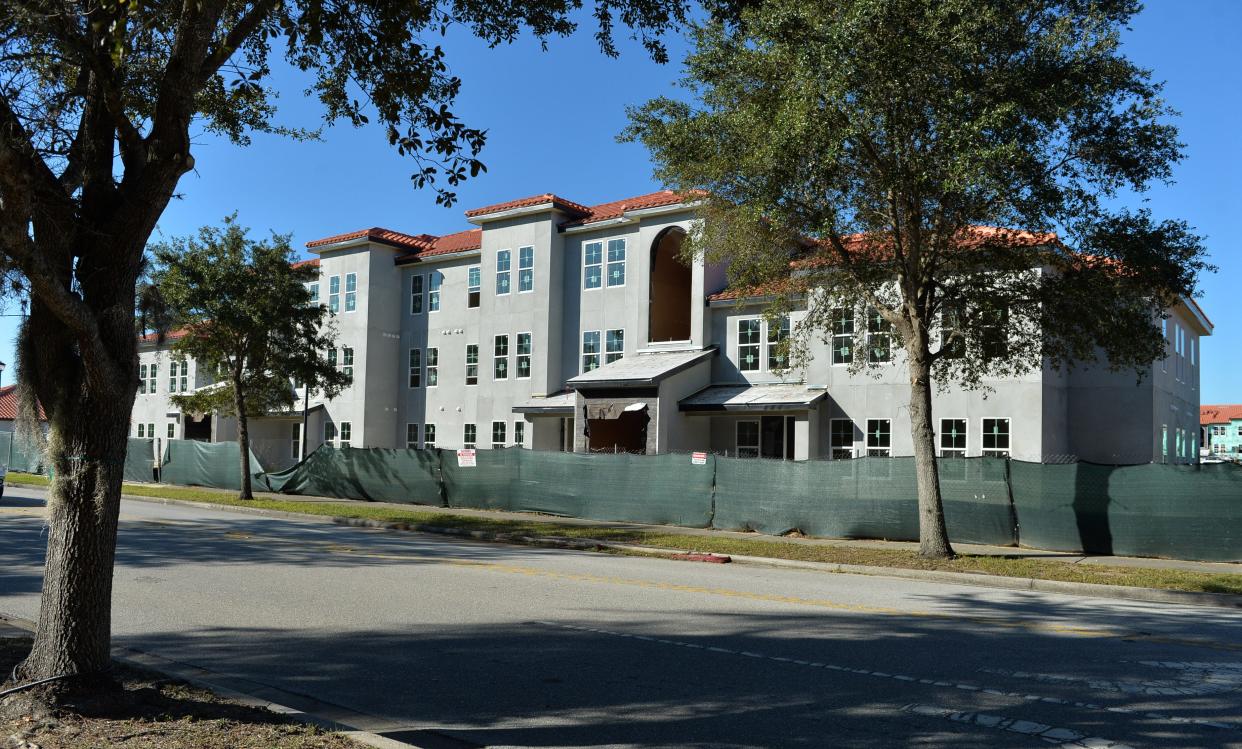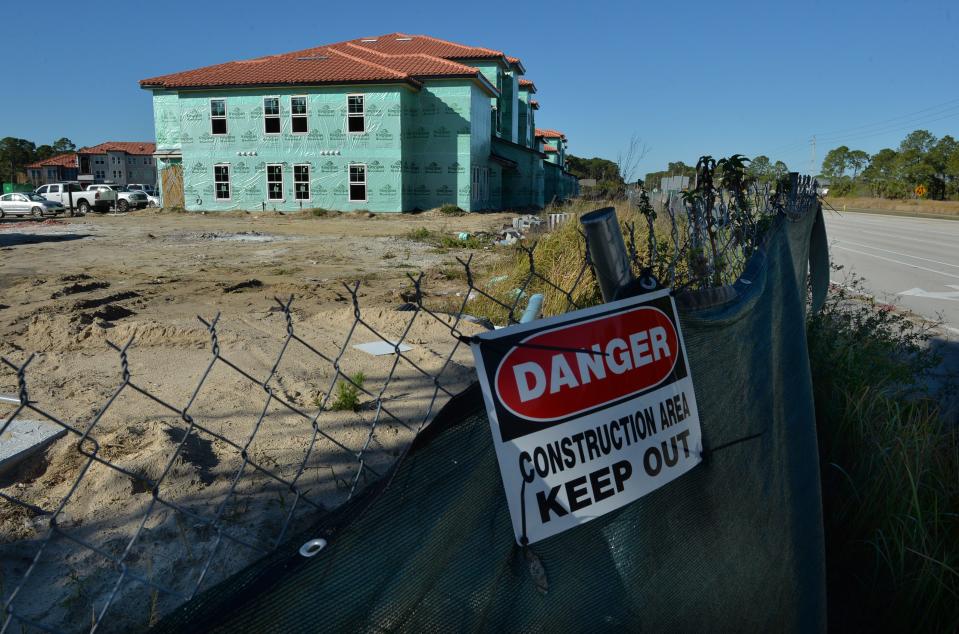North Port crafts plan to entice businesses with impact fee reduction

NORTH PORT – The city of North Port plans to entice targeted businesses to move to the city by reducing impact fees by as much as 50% for a variety of segments, ranging from aerospace to hospitality.
The City Commission approved the rewrite of its impact fee ordinance on a 4-1 vote, Jan. 11 but stopped short of including provisions to make affordable housing as part of the incentive program.
City Commissioner Debbie McDowell saw her motion to amend the ordinance to include incentives for affordable housing – along with incentives for endeavors such as corporate headquarters, hotels, creative industries and logistics and distribution – die for lack of a second. She cast the dissenting vote for that reason.
“The sole reason I dissent was because of affordable housing,” McDowell said. “That is a need that is just as vital to this community as targeted industry.”
With housing costs and rents in the North Port, Sarasota and Bradenton municipal service area rising to record levels, many residents have been left scrambling for housing – especially as rental homes have been sold to new owners.
City Manager Jerome Fletcher assured McDowell that the city is planning on incentives for affordable housing.
“It is not being left out, it will be brought to you at a future date,” Fletcher said.
Even without the extra incentives the city has attracted developers who specialize in affordable apartments that utilize federal tax credits as part of the financing.
Related: North Port approves site plan for Palm Port
The city contributed $50,000 toward the construction of Palm Port, a 126-unit complex at the intersection of Price Boulevard and Citizens Parkway that is under construction.
It also contributed $50,000 toward the construction of Arbor Park, a 136-unit, 55-and-older affordable housing complex, that’s essentially across Citizens Parkway from Palm Port.
Earlier: Florida funds 55-and-older affordable apartment complex
McDowell Housing Partners, the developer of Arbor Park, plans to break ground as soon as this summer.
City commissioners approved the site and development plan for the complex on Jan. 11.
McDowell used that development as an example of the type of housing she hoped could benefit from impact fee incentives.
Earlier: Nonprofit plans to build 288 affordable apartments in North Port
In addition to those two apartment complexes, the Atlantic Housing Foundation plans to build 288 affordable apartments on 19.88 acres it purchased off of Pan American Boulevard.
Little impact fee relief for housing
Little impact fee relief is offered to residential developers in Sarasota County. In 2018, the Sarasota County Commission approved an ordinance that offered a discount on mobility fees for multifamily residences 750-square-feet in size or smaller, but that doesn’t affect other impact fees.
The city of Sarasota offers that mobility fee discount as well.
Part of the lack of discounts has relates to the fact that governments typically have to make up for that revenue reduction from other funds.
Charles Hines, a former county commissioner, said that changed with respect to affordable housing construction when the Legislature rewrote Chapter 163 in Florida statutes, which governs impact fees.
Now, counties, municipalities and special districts can reduce or waive impact fees for affordable housing – as defined in Chapter 420 of Florida law – without replacing the lost funds from other revenue sources.
Affordable housing wasn’t included in North Port's impact fee ordinance because city staff was specifically directed to develop a method to entice targeted businesses, North Port Economic Development Manager Mel Thomas said at the meeting.
“The answer is that the commission charged us with looking at commercial, industrial rates,” Thomas said.
After the vote, City Commissioner Jill Luke said that affordable housing was a different issue that she did not want to see tied to this impact fee program, adding that the ordinances should be kept “clean and crisp.”
Vice Mayor Barbara Langdon agreed, adding that while the city needs an affordable housing plan, she didn’t want it tied to this effort, either.
North Port is updating its impact fees from a 2011 study to one adopted in 2020, while at the same time transitioning from transportation impact fees to mobility fees.
Targeting industries for impact
The plan North Port is embracing chose the targeted industries based on a feasibility study by Camoin and Associates, as well as those supported by the Economic Development Corporation of Sarasota County and Enterprise Florida.
Those businesses would be funneled to five of the city’s established activity centers – Heron Creek, Gateway, Panacea, The Crossings, and The Springs – with a nod given to compatibility with the existing neighborhood.
The city has committed to spending $8.2 million in American Rescue Plan funds to extend water and sewer infrastructure to activity centers, to help entice businesses.
Earlier: North Port plans to spend American Rescue Plan funds to spur commercial growth
The activity center with potential for the biggest economic upside is Panacea, which includes the northern portion of the Toledo Blade interchange off of Interstate 75.
More than 500 acres of developable land is available north of the interstate in Panacea.
All 10 of the targeted businesses are eyed for Panacea.
Activity Center 3 – essentially the Sumter Boulevard interchange at I-75 – would be a site for all targeted businesses except aviation and aerospace.
The Camoin Study projected that every dollar spent on infrastructure projects in Panacea, the area with the most undeveloped land, could add between $58 and $290 in taxable assessed value to the public tax rolls.
Randy Bowling, a market research analyst with North Port’s economic development department, said aviation, aerospace or large manufacturing endeavors would be some of what’s targeted for Panacea because of capacity requirements.
In explaining the proposal, Bowling used the example of a 70,000-square-foot distribution logistics space that required a capital investment of $5.5 million to build and another $1.1 million to furnish.
That new facility would bring in about 34 new jobs to the city.
Though Bowling took pains to keep the discussion abstract, those parameters closely fit the size of the facility Tervis Tumbler will open, while leasing space from Benderson Development at the North Port Business Park.
Bowling used other established business modeling software to estimate that those jobs would pay an annual wage of $43,864, with an average pay increase of 2.5%.

Though the city has not fully factored in the yet-to-be determined city mobility fees; Bowling used existing transportation impact fees as part of an equation to estimate that the projected impact fee cost for that facility would be $264,145.
Under the proposed ordinance, that would be cut by 50% to $132,072.50, as the impact fee incentive for that potential employer.
Between the economic impact of construction – including workers eating lunch, buying gas and other expenditures – it would take about 146 days for the city to recoup the value of the incentive.
And the new facility would pay future property taxes.
After Bowling’s presentation, Thomas emphasized that the impact fee break is “collected in that way, it’s that multiplier effect.”
Once city officials develop the final form of the impact fee ordinance, it could have a first reading as soon as April, with a second reading targeted for June.
Implementation of mobility fees would follow a similar path, with a second reading in June or July.
Langdon was satisfied with the model.
“I love the combination of geography and targeted industries,” she said. “It has just been a frustration to a lot of us in the past to see valuable commercial industrial space taken over by the kinds of companies that have not achieved those good jobs and those types of things.”
She added that the proposal, for the first time, gives them a chance to guide what happens in the city and put industries where they should be.
Earle Kimel primarily covers south Sarasota County for the Herald-Tribune and can be reached at earle.kimel@heraldtribune.com. Support local journalism with a digital subscription to the Herald-Tribune.
This article originally appeared on Sarasota Herald-Tribune: North Port to reduce impact fees 50% for targeted businesses

